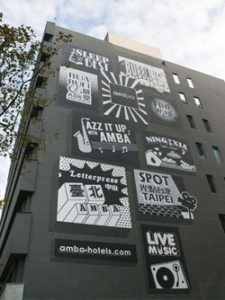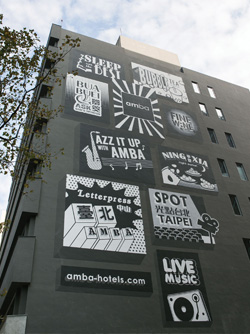Taipei’s hotel supply is making progress in the mid-market segment as developers bet on the rising wave of Asian FITs

With yearly visitor arrivals already hitting the 10 million mark a few years ago, Taiwan is fast becoming a hotspot for Asian FITs, especially independent travellers from China.
Since Taiwan opened its doors to Chinese independent tourists in 2011, the number of Chinese FITs arrivals into Taiwan rose from 191,148 in 2012 to 522,443 in 2014, reaching nearly 1.3 million from January to November 2015, according to figures from the National Immigration Agency. Last September, Taiwan further raised the daily quota of Chinese FITs from 4,000 to 5,000, way more than group tours which is limited to 2,500 per day.
The surge in visitor numbers also call for more mid-market hotels. According to figures from CBRE and Taiwan Tourism Bureau, the mid-tier hotel is the only segment to display a robust growth, from 353 properties in 2012 to 458 properties in November 2015. Furthermore, 135 new hotels are scheduled to be completed over the next two years.
In December 2015, the 465-room Courtyard by Marriott Taipei launched on the 7th to 30th floors above CityLink Mall, which is connected to the Nangang Station serving the Taipei Metro and Taiwan Railway.
Owned and operated by the local Leofoo Tourism Group, the property has revealed its interest in attracting business traffic as it resides close to the Nangang Exhibition Center and Nangang Software Park as well as a host of technology companies in the Nangang district.
Even as the popularity of budget hotels has grown on the back of a Chinese visitor influx, higher-price international branded hotels the likes of Courtyard by Marriott still have “great potential” in Taiwan’s hospitality market, remarked a Leofoo Tourism Group spokeswoman.
“Although the number of hotels in Taipei continues to increase, international branded hotels have not expanded as much in recent years. Therefore, the future development of tourism business market in Taiwan should not be limited to the Chinese market,” she said, adding that Courtyard by Marriott Taipei will rely on its established branding to attract tourists from around the world.
Targeted at leisure and FIT travellers, the 88-room Aloft Taipei Zhongshan also opened its doors last December, while the city’s second Aloft is scheduled to open in Beitou in October 2016.
Hotel manager of Aloft Taipei Zhongshan, Tiffany Lin, said: “Although we won’t be able to accommodate large tour groups, we will explore opportunities to work closely with travel agents to reach our target market.
“Lately we have seen an increasing number of FITs from Hong Kong, Macau and China. We hope (that with our positioning as) a US brand, we will attract guests who have been using hotels in this (Zhongshan) area and are willing to experience new hotels, as well as those who are aware of our brand. Taiwan still needs more mid-range or luxury properties to fuel future tourism.”
The mid-range trend is not confined to global hospitality players only. Homegrown companies like Ambassador Hotel Group celebrated its 50th anniversary with a new brand – amba Hotels. Unlike the full-service Ambassador hotels, amba stresses fun and creative elements. So far, both the 90-key amba Zhongshan and 160-key amba Ximending are now operational, with the 190-key Songshan and Kenting slated to open in 2016 and 2017 respectively.
Welcoming a more diversified hotel scene in Taipei, Swire International Travel’s general manager, Norman Meng, said: “Taiwan has been less popular in the tourist market until recent years. These international hotel brands not only enhance Taiwan’s brand exposure but also create more hotel choices for burgeoning FIT travellers from China, Hong Kong and South-east Asia.”
Suki Sin, director of Hongkong-based Muse Travel, opined: “International mid-tier hotels may offer a choice as minsu homestays are mostly scattered in he countryside and not available in the city. However, Hong Kong travellers prefer to stay in local boutique style hotels due to their special design.”
This article was first published in TTG Asia, February 5, 2016 issue, on page 22. To read more, please view our digital edition or click here to subscribe.




















